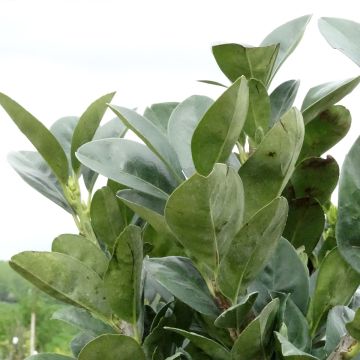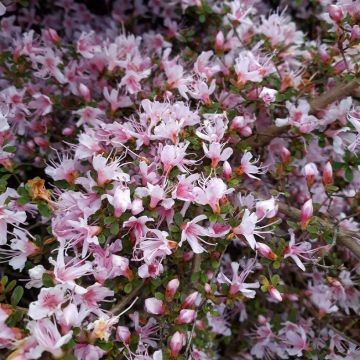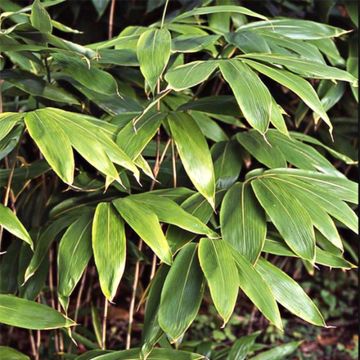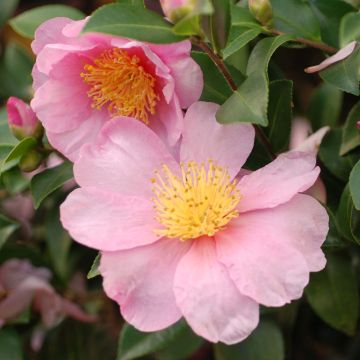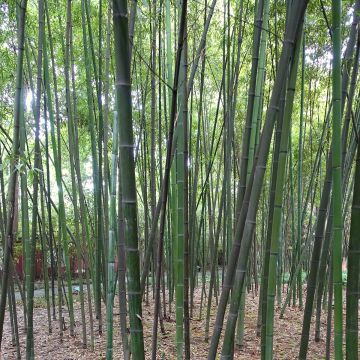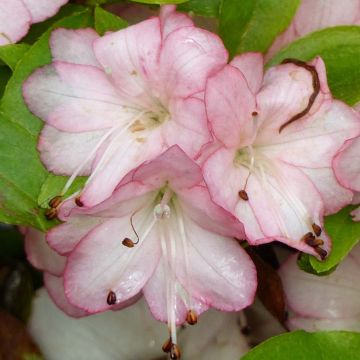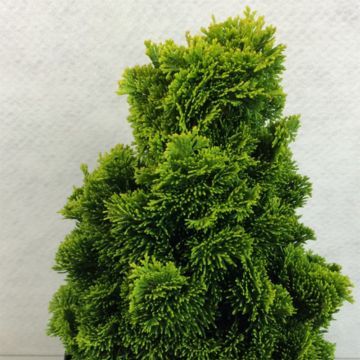Shipping country and language
Your country of residence may be:
Your country of residence is:
For a better user experience on our website, you can select:
Your shipping country:
Andorra
Austria
Belgium
Bulgaria
Canada
Chile
Croatia
Cyprus
Czechia
Denmark
Estonia
Finland
France
Germany
Greece
Hungary
Iceland
Ireland
Italy
Latvia
Lithuania
Luxembourg
Malta
Monaco
Netherlands
Poland
Portugal
Romania
Slovakia
Slovenia
Spain
Sweden
Switzerland
United Kingdom
We only deliver seed and bulb products to your country. If you add other products to your basket, they cannot be shipped.
Language:
French
German
Spanish
English
My Account
Hello
My wish lists
Plantfit
Log in / Register
Existing customer?
New customer?
Create an account to track your orders, access our customer service and, if you wish, make the most of our upcoming offers.


Prunus laurocerasus - Cherry Laurel


Prunus laurocerasus - Cherry Laurel


Prunus laurocerasus - Cherry Laurel
Prunus laurocerasus - Cherry Laurel
Prunus laurocerasus Rotundifolia
Cherry Laurel, Common Laurel, English Laurel
Order in the next for dispatch today!
Dispatch by letter from €3.90.
Delivery charge from €5.90 Oversize package delivery charge from €6.90.
More information
This item is not available in your country.
Schedule delivery date,
and select date in basket
This plant carries a 24 months recovery warranty
More information
We guarantee the quality of our plants for a full growing cycle, and will replace at our expense any plant that fails to recover under normal climatic and planting conditions.
From €5.90 for pickup delivery and €6.90 for home delivery
Express home delivery from €8.90.
From €5.90 for pickup delivery and €6.90 for home delivery
Express home delivery from €8.90.
From €5.90 for pickup delivery and €6.90 for home delivery
Express home delivery from €8.90.
From €5.90 for pickup delivery and €6.90 for home delivery
Express home delivery from €8.90.
Oversize package: home delivery by special carrier from €6.90 per order..
Express home delivery from €8.90.
Does this plant fit my garden?
Set up your Plantfit profile →
Description
The Prunus laurocerasus 'Rotundifolia' is a variety of Cherry Laurel or Palm Laurel perfect for creating evergreen screens with strong shading power and windbreak. This bush stands out for its vigor and the density of its foliage, which is also more rounded than that of the species. Depending on your budget, the length of your hedge, your patience, and the time you can dedicate to gardening, different types of products are available to you.
- For an economical cherry laurel hedge, opt for 9 cm pots that you can plant all year round. The soil preparation should be meticulous (careful weeding, removal of all roots, planting trench), and it is preferable to lay a sheet at the base of the shrubs to limit the germination of adventive plants and the weeding work, while they establish themselves. Once established, they grow quickly and will soon catch up with their cultivated counterparts in pots. This is the most economical solution when it comes to creating a hedge of at least 10 m (32.8 ft) in length.
- For a fast-growing cherry laurel hedge or to fill in an existing hedge, your choice will be bushes in 3.5-liter, 7.5 to 10-liter, or even 18-liter pots. Potted shrubs can be planted all year round, except during freezing or heatwave periods. They are planted in individual planting pits, like all other shrubs in the garden. While they make an immediate impact, they take a little longer to "start" and will require more frequent and regular watering, especially when it is dry in summer.
Respect the proper planting distance according to the size of your plant! It is advisable to leave a space of 60 cm (23.6 in) between each plant for plants in pots, 70 to 80 cm (31.5 in) for plants in 2 or 3-liter pots, 80 cm (31.5 in) to 1 m (3.3 ft) for pots from 4 to 10 liters, and 1 m (3.3 ft) to 1.2 m (3.9 ft) for pots larger than 10 liters.
As for the height of your hedge: apart from specific specifications for a housing development or a condominium, the Civil Code applies: if trees and shrubs are taller than 2 m (6.6 ft), they must be planted at a minimum distance of 2 m (6.6 ft) from the property boundary. If the height is less than 2 m (6.6 ft), a minimum distance of 50 cm (19.7 in) is required. The planting distance is calculated from the separating boundary to the center of the tree. The height is measured from the ground to the tip of the plant.
Loved by gardeners in all regions, the Prunus laurocerasus 'Rotundifolia' withstands pruning well, is hardy, grows fast, and is easy to cultivate in ordinary soil. It develops beautiful green and glossy foliage and adorns itself in spring, if not pruned, with fluffy white-cream panicles of attractive, slightly fragrant flowers.
Native to southeastern Europe and Asia Minor and indigenous to Iran, the Caucasus, and Turkey, the Cherry Laurel (sometimes called Trabzon Laurel, almond laurel, or palm laurel) is an evergreen shrub of the rose family.
The cultivar 'Rotundifolia' has, as its name suggests, leaves which are more rounded at their tips, and denser vegetation. The habit of this shrub is both erect and bushy, well-branched at the base. At maturity, it will reach approximately 4m (13.1 ft) in height and 3m (9.8 ft) in width, if not hindered in its lateral development. Its foliage consists of large, leathery leaves which are shiny green and more or less intense depending on the nature of the soil. In limestone soil it will tend towards light green and in acidic soil, towards dark green. The lamina is shiny on the top, lighter and matte on the underside, very decorative. The light green young shoots develop into ovate and elongated leaves, 15 to 18 cm (7.1 in) long and 5 cm (2 in) wide. In April-May, upright clusters of 10 to 12 cm (4.7 in) covered in tiny white flowers appear at the ends of the shoots, visited by bees. They give way, in summer, to small ovoid fruits that are initially green, then turn red, and become black when ripe. They are not edible but sought after by birds that spread the seeds.
Attention: The leaves and all parts of the cherry laurel are toxic if ingested, except for the pulp of the fruit (the seed is toxic). They contain prussic acid (cyanide), associated with an aromatic substance called benzaldehyde, with a bitter almond odour - also found in e.g. apricot and peach kernels.
This Cherry Laurel is one of the most commonly used shrubs in Europe for creating screen hedges. It has all the qualities required to excel as a low or high trimmed hedge. As a low hedge, it protects against prying eyes; as a high hedge, it forms an excellent windbreak and a good sound insulator. That said, this 'Rotundifolia' palm laurel rewards better treatment than just repeated pruning which damages its foliage and suppresses its charming flowering at an early stage: it looks good in a free hedge, mixed with other evergreens (Elaeagnus ebbingei, Viburnum tinus, Rhamnus alaternus, Arbutus unedo, Photinia), or in a shrub bed. If the fruits develop to maturity they will give rise to many young plants inside or outside the garden.
Prunus laurocerasus - Cherry Laurel in pictures


Plant habit
Flowering
Foliage
Botanical data
Prunus
laurocerasus
Rotundifolia
Rosaceae
Cherry Laurel, Common Laurel, English Laurel
Cultivar or hybrid
Other Cherry Laurel - Commun Laurel
Planting and care
The Prunus laurocerasus 'Rotundifolia', very accommodating and very easy to grow, is satisfied with an ordinary soil without too much limestone, in moderately dry to humid conditions. It tolerates all exposures while preferring partial shade, and withstands low temperatures well (to around -15°C). Even if its above-ground parts can be damaged by very strong frosts, it emits vigorous shoots from the base. Long and intense drought periods can destroy already aged plants. Planting is preferably done in autumn or early spring in cool regions.
Quite resistant to disease, it is however often subject to leaf spot, a pathology caused by a fungus. These attacks occur in spring and autumn, resulting in small circular black spots perforating the leaves which turn yellow and fall off. This disease does not endanger the plant but causes particularly unsightly damage and will spread to the entire laurel hedge. It can be treated preventively with a fungicidal product (Bordeaux mixture, sulphur) or, when planting, different evergreen plants can be used in the composition of the hedge, in order to stop the spread of the disease when it occurs. Attacks by aphids, scale insects, and powdery mildew can also be a threat in hot and dry weather.
Note: The decomposition of laurel leaves, which is very slow, releases substances in the litter that inhibit the germination and growth of other plants. It is therefore preferable to dispose of pruning waste at a recycling center and not compost them.
Planting period
Intended location
Care
- , onOrder confirmed
Reply from on Promesse de fleurs
Evergreen shrubs
Haven't found what you were looking for?
Hardiness is the lowest winter temperature a plant can endure without suffering serious damage or even dying. However, hardiness is affected by location (a sheltered area, such as a patio), protection (winter cover) and soil type (hardiness is improved by well-drained soil).

Photo Sharing Terms & Conditions
In order to encourage gardeners to interact and share their experiences, Promesse de fleurs offers various media enabling content to be uploaded onto its Site - in particular via the ‘Photo sharing’ module.
The User agrees to refrain from:
- Posting any content that is illegal, prejudicial, insulting, racist, inciteful to hatred, revisionist, contrary to public decency, that infringes on privacy or on the privacy rights of third parties, in particular the publicity rights of persons and goods, intellectual property rights, or the right to privacy.
- Submitting content on behalf of a third party;
- Impersonate the identity of a third party and/or publish any personal information about a third party;
In general, the User undertakes to refrain from any unethical behaviour.
All Content (in particular text, comments, files, images, photos, videos, creative works, etc.), which may be subject to property or intellectual property rights, image or other private rights, shall remain the property of the User, subject to the limited rights granted by the terms of the licence granted by Promesse de fleurs as stated below. Users are at liberty to publish or not to publish such Content on the Site, notably via the ‘Photo Sharing’ facility, and accept that this Content shall be made public and freely accessible, notably on the Internet.
Users further acknowledge, undertake to have ,and guarantee that they hold all necessary rights and permissions to publish such material on the Site, in particular with regard to the legislation in force pertaining to any privacy, property, intellectual property, image, or contractual rights, or rights of any other nature. By publishing such Content on the Site, Users acknowledge accepting full liability as publishers of the Content within the meaning of the law, and grant Promesse de fleurs, free of charge, an inclusive, worldwide licence for the said Content for the entire duration of its publication, including all reproduction, representation, up/downloading, displaying, performing, transmission, and storage rights.
Users also grant permission for their name to be linked to the Content and accept that this link may not always be made available.
By engaging in posting material, Users consent to their Content becoming automatically accessible on the Internet, in particular on other sites and/or blogs and/or web pages of the Promesse de fleurs site, including in particular social pages and the Promesse de fleurs catalogue.
Users may secure the removal of entrusted content free of charge by issuing a simple request via our contact form.
The flowering period indicated on our website applies to countries and regions located in USDA zone 8 (France, the United Kingdom, Ireland, the Netherlands, etc.)
It will vary according to where you live:
- In zones 9 to 10 (Italy, Spain, Greece, etc.), flowering will occur about 2 to 4 weeks earlier.
- In zones 6 to 7 (Germany, Poland, Slovenia, and lower mountainous regions), flowering will be delayed by 2 to 3 weeks.
- In zone 5 (Central Europe, Scandinavia), blooming will be delayed by 3 to 5 weeks.
In temperate climates, pruning of spring-flowering shrubs (forsythia, spireas, etc.) should be done just after flowering.
Pruning of summer-flowering shrubs (Indian Lilac, Perovskia, etc.) can be done in winter or spring.
In cold regions as well as with frost-sensitive plants, avoid pruning too early when severe frosts may still occur.
The planting period indicated on our website applies to countries and regions located in USDA zone 8 (France, United Kingdom, Ireland, Netherlands).
It will vary according to where you live:
- In Mediterranean zones (Marseille, Madrid, Milan, etc.), autumn and winter are the best planting periods.
- In continental zones (Strasbourg, Munich, Vienna, etc.), delay planting by 2 to 3 weeks in spring and bring it forward by 2 to 4 weeks in autumn.
- In mountainous regions (the Alps, Pyrenees, Carpathians, etc.), it is best to plant in late spring (May-June) or late summer (August-September).
The harvesting period indicated on our website applies to countries and regions in USDA zone 8 (France, England, Ireland, the Netherlands).
In colder areas (Scandinavia, Poland, Austria...) fruit and vegetable harvests are likely to be delayed by 3-4 weeks.
In warmer areas (Italy, Spain, Greece, etc.), harvesting will probably take place earlier, depending on weather conditions.
The sowing periods indicated on our website apply to countries and regions within USDA Zone 8 (France, UK, Ireland, Netherlands).
In colder areas (Scandinavia, Poland, Austria...), delay any outdoor sowing by 3-4 weeks, or sow under glass.
In warmer climes (Italy, Spain, Greece, etc.), bring outdoor sowing forward by a few weeks.





